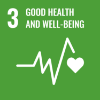- Countries/Regions
- ZambiaKenyaTanzania
- Category
- Regional Contribution
- Academic Field
- Dentistry
- Related goals of SDGs




| Keyword |
Africa, WHO essential dental preparations, oral diseases
|
Information on Niigata University
| Name of the professor/researcher |
(1) Hiroshi OGAWA (2) Sachiko TAKEHARA (3) Hikaru OKUBO |
| Position/Faculty |
(1) Professor, Faculty of Dentistry (2) Associate Professor, Faculty of Dentistry (3) Postgraduate course student |
Information on the Counterpart
| Countries/Regions |
(1) Kenya (2) Tanzania (3) Zambia |
| Faculty/Institution |
(1) Ministry of Health, Kenya (2) Ministry of Health, Tanzania (3) Ministry of Health, Zambia |
Detailed Information/Report on Activities
・Oral diseases (e.g., dental caries) are the most common disease in the world, affecting 43.7% of the population in the WHO African Region. The WHO recommends fluoride toothpaste, silver diamine fluoride (SDF), and glass ionomer cement as part of the WHO essential medicine list that are cost-effective and necessary to prevent and treat dental caries and improve access to oral health services. However, the availability of these materials is still challenging in African countries.
・The quality of the above dental materials produced in Japan is assuredly high. Japanese companies have an advantage, especially in producing SDF, due to the limited number of companies producing SDF globally. SDF is expected to be submitted to the WHO pre-certified list of medicines.
・As part of this project, we plan to introduce and train MoH officers from three targeted countries in Japan on how to use these materials and to discuss dissemination and deployment approaches. The curriculum of training includes 1) prevention, arrest progression of dental caries, and restorative treatment, 2) methodology of manufacturing, use, and preservation of the above three materials, and 3) identification of barriers and facilitators for the dissemination and deployment of the materials which inform to develop an action plan.




